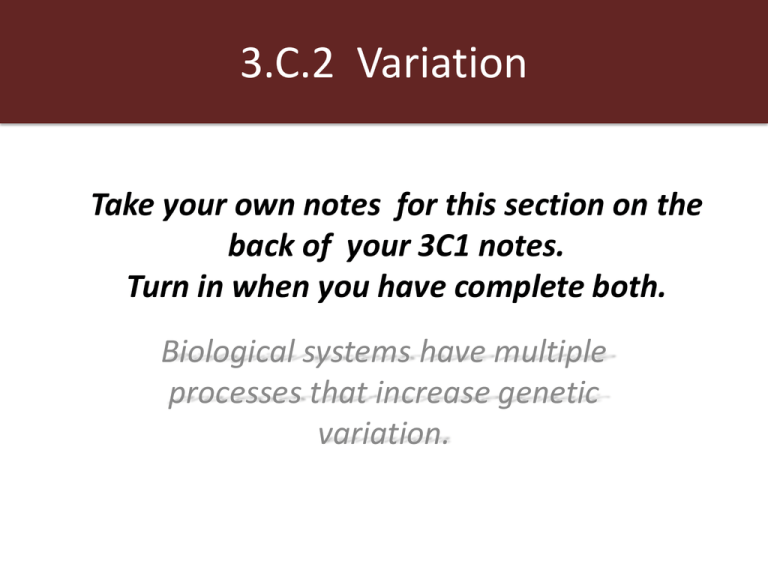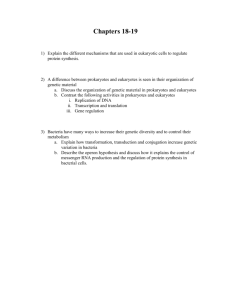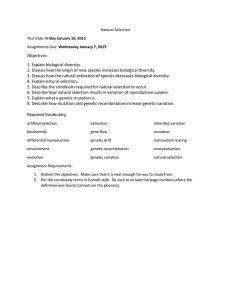3.C.2 Variation - Cloudfront.net
advertisement

3.C.2 Variation Take your own notes for this section on the back of your 3C1 notes. Turn in when you have complete both. Biological systems have multiple processes that increase genetic variation. Sources of Genetic Variation Prokaryotes • • • • Random mutation Conjugation Transformation Transduction Eukaryotes • • • • Random mutation Crossing over Random assortment Random fertilization Ways of obtaining of genetic variation in prokaryotes: Random mutation: the imperfect nature of DNA replication and repair increases variation. Prokaryotes, which reproduce through binary fission, can obtain genetic variation through the horizontal transfer of genetic information. Bacterial conjugation is the transfer of genetic material, usually a plasmid, between bacterial cells by direct cell-to-cell contact or by a connection between two cells called a pilus. In transformation, exogenous genetic material from the surroundings is incorporated into a bacterial cell and expressed, resulting in genetic alteration of the cell. In transduction, DNA is transferred from one bacterium to another by a virus called a bacteriophage. viral vector Eukaryotes reproduce by sexual reproduction, increase genetic variation by: Random Mutation Random Fertilization • • • • Random mutation Crossing over Random assortment Random fertilization Crossing Over Random Assortment Reproductive processes that increase genetic variation are evolutionarily conserved and are shared by various organisms. Learning Objectives: LO 3.27 The student is able to compare and contrast processes by which genetic variation is produced and maintained in organisms from multiple domains. [See SP 7.2] LO 3.28 The student is able to construct an explanation of the multiple processes that increase variation within a population. [See SP 6.2]









